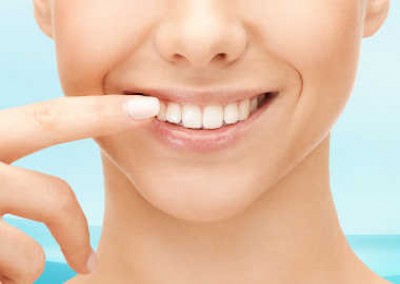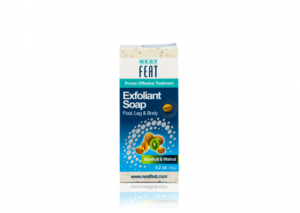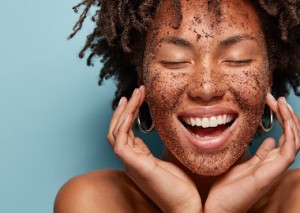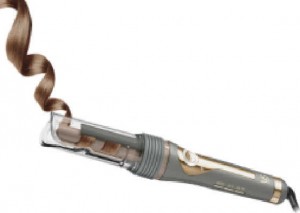
by BR Tabatha
Face crust - it happens to the best of us. One moment we're heading off the for the day, having applied our daily makeup, the next we catch sight of ourselves in the bathroom at work or in the car's rear vision mirror and see that our face base has bunched up and stuck to dry and/or textured areas to create cakey, flakey spots of crusty looking skin.
For me it usually happens between my eyebrows. What starts out looking smooth and blended ends up looking like I've caked on foundation, concealer and powder and not bothered to blend it.
So what's a makeup lover to do when they fall foul of face crust? First thing's first, make sure you've got your skincare down.
Skincare
Dry and textured skin can be helped or headed off at the pass by exfoliating your face after cleansing. It will even out the surface and remove any dead skin cells.
Whether you choose to exfoliate or not, moisturising is a must if you want to deal to any dry patches and/or create an excellent base for your makeup. Do make sure you give your moisturiser time to settle in before going onto your makeup, as not doing so can result in the dreaded pilling.
For extra hydration, add in a hydrating serum, again giving it time to sink in before reaching for your moisturiser.
Skincare sorted? Now to take a look at how you're applying your makeup...
Makeup
While some say there's no need for it if you've got a good moisturiser, if you've textured or dehydrated skin, primer really will make a difference to how the rest of your make up adheres to and looks on your face. As with your moisturiser, give it time to sink in before applying the rest of your makeup.
When it comes to foundation it's important that you choose a foundation that suits your skin type. An ultra matte foundation on dry skin will only result in an ultra-cakey looking face. Also, take a gently does it approach to applying your foundation. Just because every TikTokker and her bestie uses three pumps of foundation no matter what, it doesn't mean you have to. Start off with one pump, work from the centre of your face outwards, and only use as much foundation as your skin needs in order to look more even-toned. Remember, foundation isn't a face mask.
Post foundation, don't smother your skin in concealer. Instead, spot conceal the areas where you have blemishes or redness. Again gently does it. And if you've an actual scab or obvious dry spot - avoid concealing those as the product can stick to the rough edges/crusty bits and will just serve to emphasise the issue.
As for powder? If you've actual scabs, don't powder over those areas either. Instead be strategic and only powder the areas where you know you're prone to becoming oily, or where your makeup has a tendency to wear off or break down first.
As for my problem spot? There are two ways I fix it... I either take a hydrating toning mist or setting spray, spritz it onto a sponge and bounce it over the area in order to smoothe out the makeup and hydrate the skin. Or, the next day before I do my makeup, I grab my face defuzzer and whisk it over the area, removing the downy hair and dead skin cells, which tends to be the cause of the makeup disturbance. Job done. Crust dealt with.
So, is a case of the crusty face patch an issue for you? And, if so, how do you beat it?
Sharing is caring so get chatting below!












I love to exfoliate! It is an integral part of my skincare routine. Love the tip to start with the foundation from the centre of your face and work outwards. Thanks for that